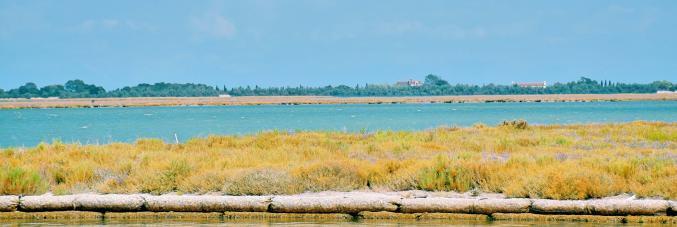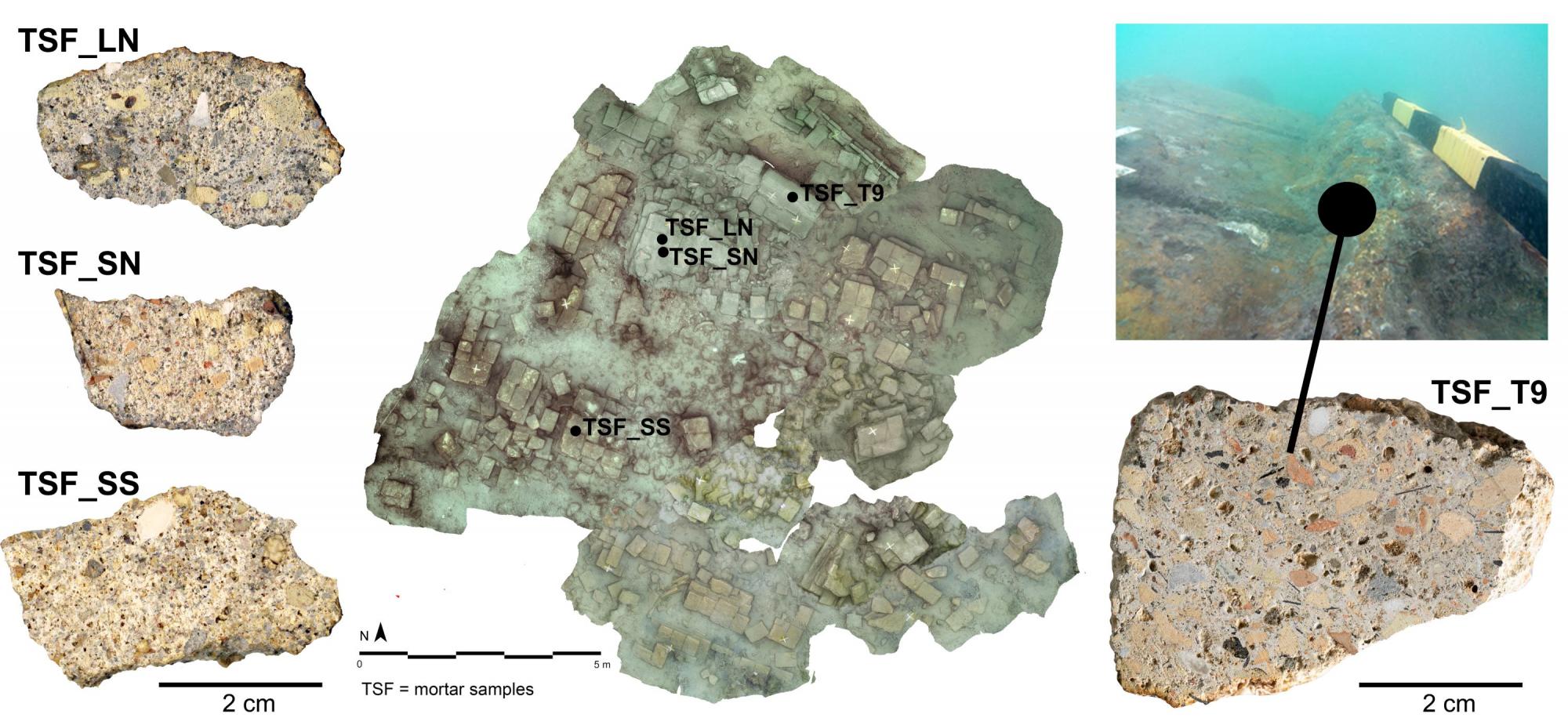
Traces of Pozzolan Dust from the Phlegraean Fields Found in the Venetian Lagoon
27.11.2024
From Canale San Felice in the Venice Lagoon, a particular construction material used as an additive in the production of Roman concrete has emerged: this is documented for the first time by the study "Vitruvian binders in Venice: first evidence of Phlegraean pozzolans in an underwater Roman construction in the Venice Lagoon," published in the journal PLoS ONE and led by the Departments of Cultural Heritage and Geosciences of the University of Padua, in collaboration with the Ca' Foscari University of Venice and the University of Modena and Reggio Emilia. The study originates from the underwater investigations of Ca' Foscari University of Venice on a water conservation structure from the Roman era, dating back to the 1st century AD and known as the ancestor of the "Venetian well."
Thanks to the analysis of some samples of the mortars with which the structure, now submerged at more than three meters deep in the northern stretch of the Venetian lagoon, was bound and coated, researchers from the University of Padua detected the completely unexpected presence of volcanic pumice originating from the Phlegraean Fields in Naples.
This material is described in detail by architects and treatise writers Vitruvius and Pliny the Elder as a powder (pulvis) with extraordinary properties, enabling ancient mortars and concretes to solidify in anaerobic environments and even underwater. Extracted from the area around ancient Pozzuoli (Puteoli), Latin authors recommended its use in the construction of port infrastructures made of concrete poured directly into the sea. 1,800 years before the discovery of Portland cement, pulvis puteolana gave ancient concretes exceptional resistance to structural loads, weathering, and the aggressive submerged environment, ensuring extraordinary durability that has recently revived the "myth" of Roman concrete.

The remains of the submerged "Venetian well," documented thanks to underwater 3D surveys, and the mortar samples collected.
"Our study is multidisciplinary, conducted at the intersection of archaeology, materials engineering, and geology. It first and foremost testifies to the extensive distribution network of pulvis puteolana, one of the most high-performing and therefore most sought-after construction materials in ancient markets," comment Simone Dilaria, a Venetian archaeologist, the study's first author, and a researcher at the Department of Cultural Heritage of the University of Padua, along with Giulia Ricci and Michele Secco, researcher and lecturer at the University. "It also reveals previously unknown and unpublished commercial and cultural connections between different regions of the Mediterranean: far from being a peripheral reality, the Lagoon emerges as a commercial hub tightly integrated into complex pan-Mediterranean maritime networks about 1,000 years before Venice founded its mercantile empire."
"The Venetian well is a hydraulic work used since Roman times in the upper Adriatic territories for the capture and conservation of fresh water, which we managed to document and survey underwater thanks to innovative photogrammetric technologies," add Carlo Beltrame and Elisa Costa, lecturer and researcher at the Department of Humanities of Ca' Foscari University of Venice and authors of the underwater investigations carried out under a concession from the Ministry of Culture, with the high supervision of the Superintendency of Archaeology, Fine Arts, and Landscape for the Municipality of Venice and the Lagoon.
The determination of the origin of the pulvis was made possible through sophisticated microscopic and geochemical analyses, which until a few years ago were never performed on archaeological materials but can now be conducted on rocks and minerals even when finely ground into a micrometric-sized powder thanks to the most modern laboratory technologies.
"The fingerprint of the volcanic pulvis," emphasizes Tommaso Giovanardi, a professor in the Department of Chemical and Geological Sciences at the University of Modena and Reggio Emilia, "was traced thanks to ultra-high-resolution instruments, such as Laser Ablation Inductively Coupled Plasma Mass Spectrometry, which allow us to obtain extremely detailed geochemical data even on very tiny fragments of geological material."
The profile of these small inclusions was then compared with a vast reference database created by researchers from the Departments of Cultural Heritage and Geosciences at the University of Padua, which gathers the compositional profiles of over 1,000 geological samples of compatible volcanic products. Through the comparison of chemical tracers, the compatibility with the volcanic dust from Campania was unequivocally certified.
"The research highlights, with growing attention and now consolidated awareness, the absolute centrality and indispensable necessity of exact sciences to rigorously understand and reconstruct the complex economic, commercial, and social dynamics of the ancient world," conclude Jacopo Bonetto and Gilberto Artioli, professors in the Departments of Cultural Heritage and Geosciences at the University of Padua.
While emphasizing the close connection between Northern Italy and the most advanced Roman engineering knowledge, the study finally underscores the great originality with which the ancestors of the Venetians adapted the high-profile Vitruvian architectural forms to the specific environmental and architectural needs of the Lagoon in its delicate balance between water and land.

Highlighted are the clasts of pulvis puteolana included in the mortar samples and analyzed with geochemical investigations.



